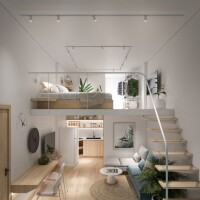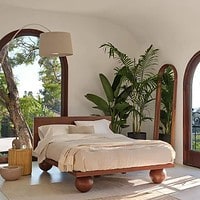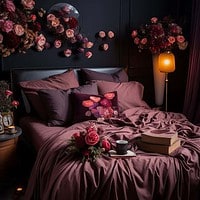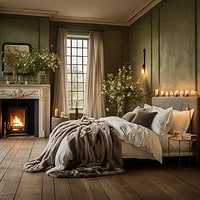Getting a restful sleep can be difficult for a variety of reasons. Whether it’s not being able to fall asleep at night, waking up in the middle of the night, or not being able to sleep in on a precious day off, too many people aren’t getting the sleep they need. In fact, on average most people in America only get six and a half hours of sleep each night. Let’s look at a few ways you can design your bedroom to get a better night’s sleep.
Furniture Arrangement
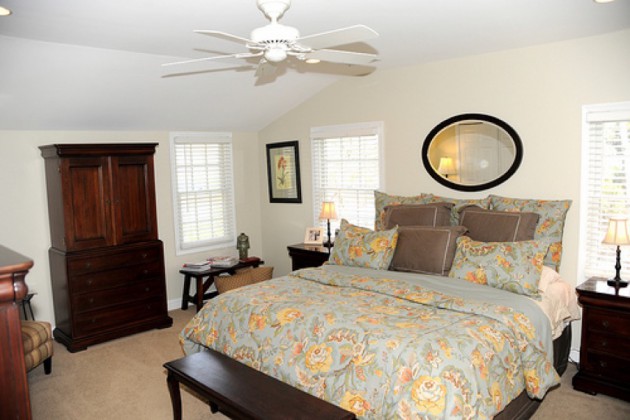
Image via Flickr by Jim Larrison
The ideal temperature for sleep is 50 to 70 degrees Fahrenheit, so it might be a good idea to install a ceiling fan. If you don’t have a ceiling fan, open a window just a crack to let the air circulate. Try to create symmetry in the room by placing matching dressers on each side of the bed and pictures symmetrically along the walls. If there are two windows, place the bed evenly between them. Add plants, photos of nature, or art to create a relaxing atmosphere. Finally, eliminate clutter by making sure you have plenty of closet and drawer space.
Noise and Light Reduction
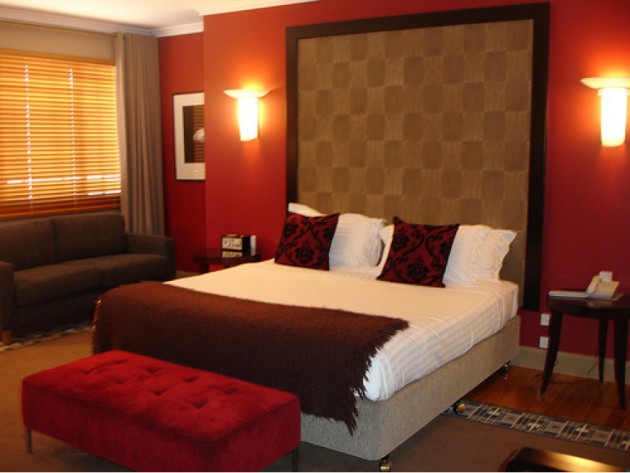
Image via Flickr by Tarraleah media
Keep the early morning light out with blinds and thick, dark curtains. Add plush rugs, cushions, and pillows to reduce noise. Think about investing in a sound conditioner or fan to create a soothing backdrop throughout the night. Keep the TV off while you sleep so the noise doesn’t interrupt your slumber. In fact, replace the TV in your room with something beautiful and peaceful.
Comfortable Bed Dressings
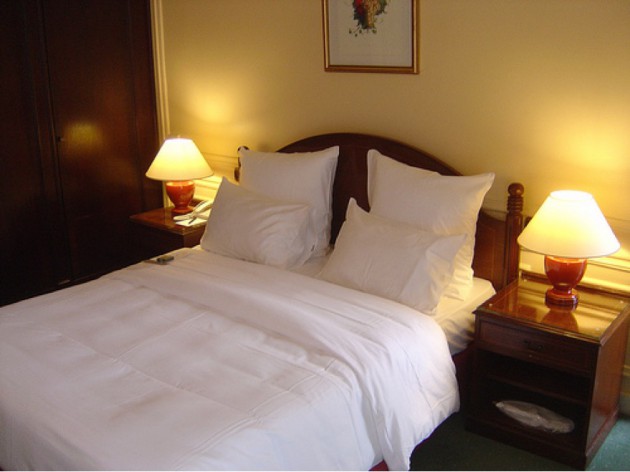
Image via Flickr by garybembridge
Choose a mattress, pillows, and sheets that make you comfortable. There are many mattress and pillow options including soft, firm, feather-topper, memory foam, and more. Make sure to choose the best mattress for your personal preferences and sleeping positions. For example, laying on your side creates natural contours, so the best mattress for side sleepers will adapt to these curves. Memory foam pillows are soft yet supportive and conform to your head and neck, helpful for those who suffer from neck pain. Also, be sure to put breathable, cotton sheets on the bed for a comfortable nighttime body temperature.
Colors
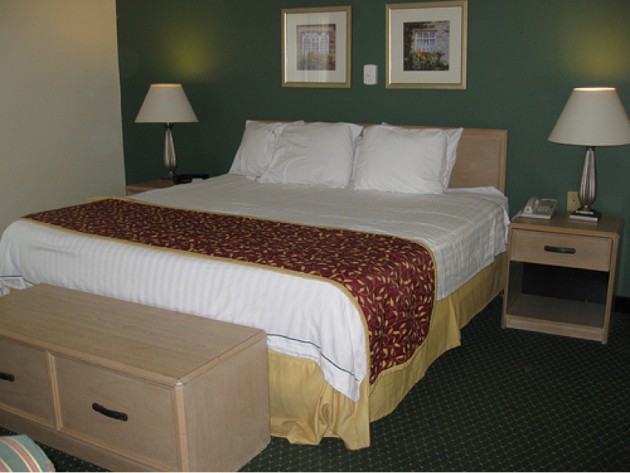
Image via Flickr by Adele 2010
Colors have an impact on our psychology, so decorate your bedroom in soothing colors for deeper relaxation. Warm colors such as reds, pinks, and oranges increase heart rate, increase blood pressure, and deepen respiration. Cool colors such as blues, greens, and grays reduce heart rate, lower blood pressure, slow respiration, dilate blood vessels, and constrict pupils. Warm colors tend to discourage relaxation while cool colors tend to promote a better sleep.
It can be difficult to get a good night’s rest these days for many reasons, but getting the sleep you need will lead to healthier skin, better vision, better memory, and better overall health. The bedroom environment has a big impact on the quantity and quality of sleep, so by making use of some of the tips above, you can improve your rest by sleeping better and longer.

